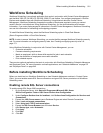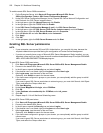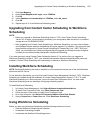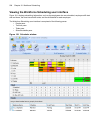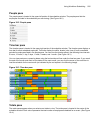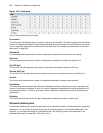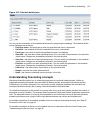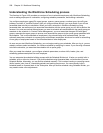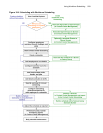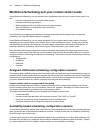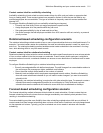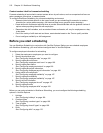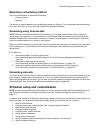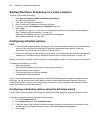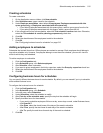508 Chapter 18 Workforce Scheduling
Understanding the Workforce Scheduling process
The flowchart in Figure 18-6 provides an overview of how to schedule employees with Workforce Scheduling,
such as adding employees to a schedule, configuring schedule parameters, and building a schedule.
You configure employees, agent IDs, agent groups, queues, queue groups, overtime types, time off types,
holidays, and skills in YourSite Explorer. After you configure these devices, you must decide if you will use
forecasted data to build your schedules. When you build a schedule in Workforce Scheduling using
forecasted data, we recommend you associate the schedule with the queue group you will use to perform the
forecast. You must ensure that the employees you want to schedule are associated with the queue group you
associate to the schedule. In Contact Center Management, you must associate the agent IDs with agent
groups, associate the agent groups to queues, and associate the queues to the queue group associated with
the schedule. This is recommended so employees in the schedule align with forecasted data. You can
optionally associate a schedule to a queue group with different employees, which can be useful for scheduling
a new group of employees based on the forecasted data of other employees.
As soon as you start Workforce Scheduling, you can begin creating your schedules. After you log in, you are
asked to create or select a schedule. You create a schedule by assigning it a name. If you are using a forecast
to build the schedule, you associate the schedule with a queue group.
After you create the schedule, you configure schedule parameters, such as shifts, breaks, jobs, and
scheduling preferences/options for each employee.
You can automate the schedule building process with the Schedule Builder tool. It helps you quickly build a
schedule, with or without a forecast. If you build schedules using forecasted data, we recommend you use
Schedule Builder. Alternately, you can build a schedule manually. This involves inserting or removing events
(shifts, breaks, jobs, time off, unavailable periods) and making events recur. You can manually build a
schedule based on forecast totals in the Totals pane. After you build a schedule using Schedule Builder, you
may need to make a few adjustments.




